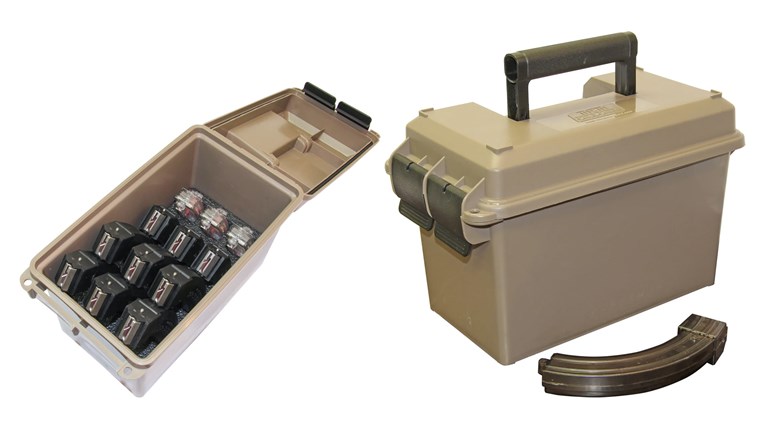
Most of us likely received our first experience with firearms at the hands of an older mentor who, more than likely, started us out with a .22 LR of some sort. Whether at a Boy Scout summer camp, 4-H event or a backyard range set up by a parent, we soon became immersed in shooting, marksmanship and safe gun-handling practices. Since 1964, millions of American youths have received their start in the shooting sports with a Ruger 10/22, one of the most popular semi-automatic .22 LR rifles ever produced, with more than 7 million manufactured in the past 57 years.
Sturm, Ruger & Company got its start in Southport, CT, in 1949 producing its now-famous Standard Pistol in .22 LR caliber. It was at the NRA Annual Meetings and Exhibits in Los Angeles on April 3, 1964, that the company unveiled the newest addition to its firearm catalog, the Ruger 10/22. This revolutionary rifle looked similar to the then-surplus U.S. M1 Carbine and was the little brother to Ruger’s .44 Carbine, introduced a few years prior.
The 10/22 was made with an aluminum receiver and a steel barrel fitted to the receiver via an ingenious dovetail feature that allowed for easy disassembly. The blow-back action made it fairly simple to keep clean and functioning. Its patented 10-shot, rotary magazine was an improved version of the Mannlicher-Schoenauer magazine first developed by Steyr, and proved to be remarkably well suited to .22-caliber ammo. This design functioned significantly better than most tubular-, single- or double-stack magazines. John “Chief AJ” Huffer set a world record in 1987 by shooting 40,060 thrown wooden blocks that measured only 2.5 inches without a miss or a malfunction over a period of seven consecutive days using 18 different Ruger 10/22’s. His single-day record was 8,900 blocks.
Initially offered for sale at $54.50, its affordable price made it an instant success with sales quickly achieving 100,000 units per annum, outpacing most of the other items offered in the Ruger line-up. The sporty rifle is as versatile as it is reliable. Few other firearms in the modern era have lent themselves so easily to aftermarket modifications. The current Ruger catalog lists 18 variations of the 10/22 for sale starting at $369, making it still one of the most affordable .22 semi-automatics on the market. Aftermarket accoutrements can completely change the look and capacity of the gun into variations that are as mind-bogglingly different as they are fun and functional.
While the 10/22 was initially marketed as a handy semi-automatic .22 LR perfect for plinking or hunting small game, numerous law enforcement organizations and military units, including the U.S. Navy SEALS, have purchased variants of the 10/22 for competitions. Equipped with a sound suppressor, it has even found use in covert operations. Law enforcement units have used suppressed versions for animal control in urban areas, as well.

The affordability and ease of operation makes the 10/22 an ideal rifle to begin one’s introduction to the shooting sports. According to the Scholastic Shooting Sports Foundation, participation in youth shooting sport events has increased by 142 percent over the past 6 years, and 88 percent of youth participating in shooting sports have family members involved in the shooting sports, too.
The NRA has prided itself in being a leader in youth training and education in the shooting sports, going all the way back to 1914 when the NRA and the Boy Scouts of America established a partnership that continues to this day via the Merit Badge program and NRA Marksmanship Qualification Awards. Whether at the NRA’s Whittington Center Adventure Camp, Youth Hunter Education Challenge or National Junior Shooting Camps, NRA-trained counselors are front and center in the effort to train today’s youth in proper safety and gun-handling practices and to help channel that initial interest into a lifetime of fun on the shooting range or in one’s own backyard.
The Ruger 10/22 is perfectly suited, through its many variations, to be the ideal all-around .22 LR rifle. From its use to teach beginners, to hunting small game to service in competitive events, it has as many uses as it does variations. It, combined with NRA’s education efforts, promises to ensure a robust shooting-sports culture in the U.S. for the foreseeable future.




































